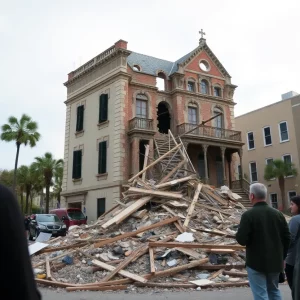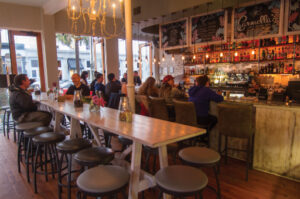Charleston Celebrates History and Community at Calvary Episcopal Church
Charleston, SC – The warm sun shines down on a breezy September day as parishioners gather at Calvary Episcopal Church, a historic site rich with stories and community ties. With temperatures reaching a comfortable 87°F and gentle winds from the southwest, the outdoors calls as much as the church’s inviting doors.
On September 21, 2024, a sense of joyful nostalgia fills the air during Sunday’s service, led by the Rev. Ricardo Bailey. The congregation unites in song, with Bailey’s voice rising above, singing hymns that echo the church’s past—a past that ties together generations. For longtime parishioners like Antoinette Bennett-Bluford, who has been attending Calvary for 75 beautiful years, this is a second home, a sanctuary that nurtured her family for five generations.
A Home of Memories
Bennett-Bluford recalls her childhood days spent in the presence of the late Rev. Stephen Mackey, who served until 1972. His visits to the Calvary kindergarten made a lasting impression, especially the beloved story of Joseph’s coat of many colors. The wise words of Mackey, “If you listen, you will learn; and if you learn, you will be smart,” resonate with her even today.
Now, as Calvary Episcopal celebrates its more than 175-year history, the church is undertaking an exciting project that aims to capture the essence of its community. The temple is documenting many inspiring stories—from the moments shared during worship to the life lessons learned along the way. This effort is part of the Calvary Icons Project, which will result in two strikingly beautiful pieces of art displayed in the church’s sanctuary, crafted by renowned London-based artist Graeme Mortimer Evelyn.
A Deep-Rooted Legacy
Calvary Episcopal Church holds the distinction of being the oldest Black Episcopal congregation in Charleston. Its foundation dates back to 1847, a place where free and enslaved African Americans found spiritual refuge. Back then, laws prohibited enslaved individuals from reading, resulting in a congregation that learned through oral teachings.
Initially gathering in the basement of St. Philip’s Episcopal Church, the congregation later moved to its own building in 1849. However, as the neighborhood began to shift demographics in the 1940s, many parishioners relocated, prompting the church to sell its property and establish itself on Line and Percy streets, a place where it thrives today.
Community Impact
The church’s significance extends well beyond Sunday services. It was also the proud founder of Calvary Day School, which opened its doors in the 1930s as the only preschool and kindergarten for Black children on the peninsula. Generations of children experienced early education within its nurturing environment until the school’s closure in 2012.
For Bennett-Bluford, the church on Line Street is the only Calvary she has ever known. She recounts how even when life took her elsewhere, Christmas Eve services became a cherished constant, a tradition akin to coming home. Many families, including Bennett-Bluford’s, once lived just a stone’s throw away, adding to the unique bond shared between the church and its community. A heartwarming tradition persisted through her mother’s passing when the family and church community walked hand-in-hand from their home to the church in remembrance of all the Sundays spent together.
A Family Atmosphere
Rev. Bailey, in his year-and-a-half tenure as rector, emphasizes the welcoming and familial atmosphere at Calvary, remarking, “Church is not just a place where you go, but church is something that you are.” His deep appreciation for the church community is evident, as he encourages ongoing engagement with its rich tapestry of history.
The Calvary Icons Project embodies a vision of honoring these stories, shaping them into art that future generations will admire. As Evelyn delves into this community, he approaches the artistic process with a long-term outlook, aiming to create pieces that speak to 200 years ahead. “History must remain intact within the church,” Evelyn believes—an essential notion that resonates through the veins of this vibrant congregation.
Connecting with the Past
Inspired by conversations at the Diocese of South Carolina’s convention, Grace Wingfield, a delegate from Calvary, is leading the charge to preserve the church’s history through art. With full support from the Right Rev. Ruth Woodliff-Stanley, the bishop of the diocese, the Calvary Icons Project aims to gather oral histories from congregants. Their memories are immediate, rich in clarity, and vital in shaping the future narrative.
As Evelyn gears up for more visits and interviews, he looks forward to creating sketches based on the collected stories. The final pieces will be skillfully carved into wood by March 2025, with a grand unveiling scheduled for November 2025. Until then, the church community continues to uplift each other, reinforcing bonds that make Calvary Episcopal Church feel like home—yesterday, today, and always.



























